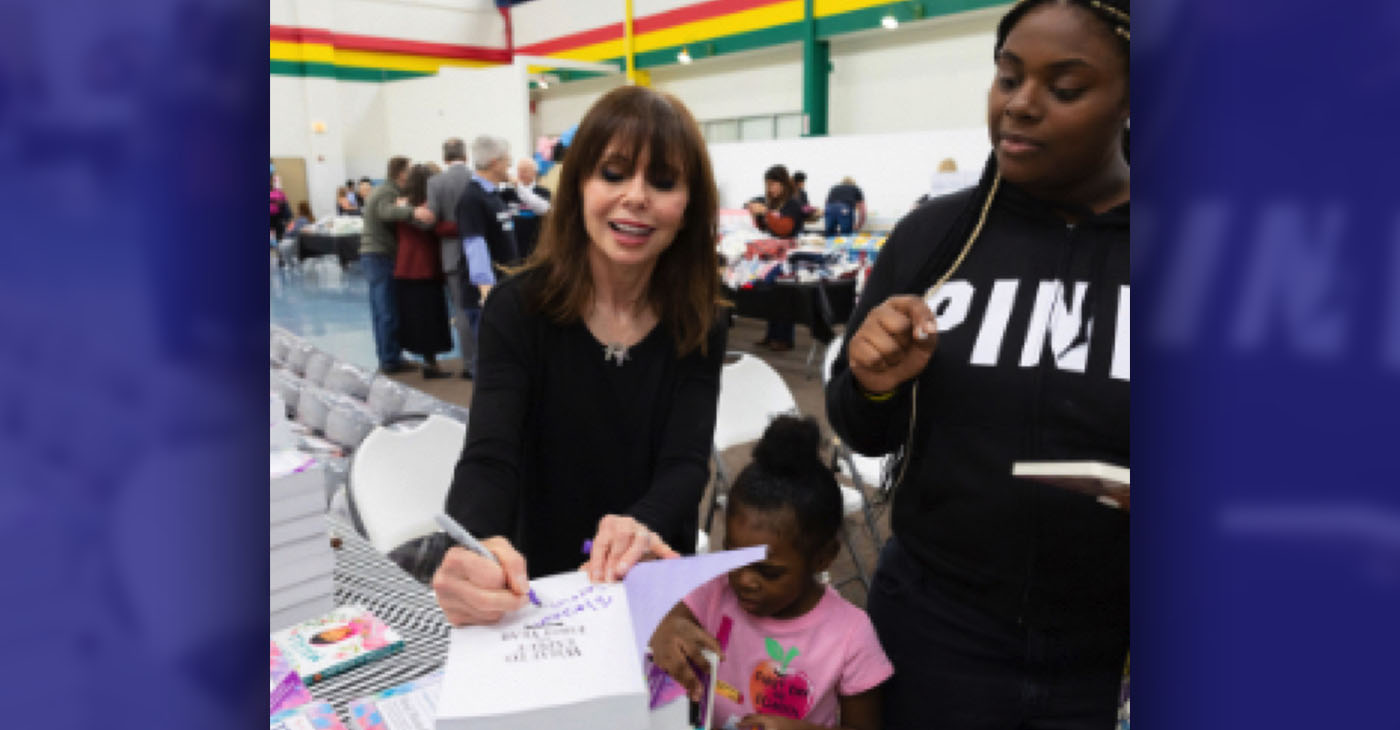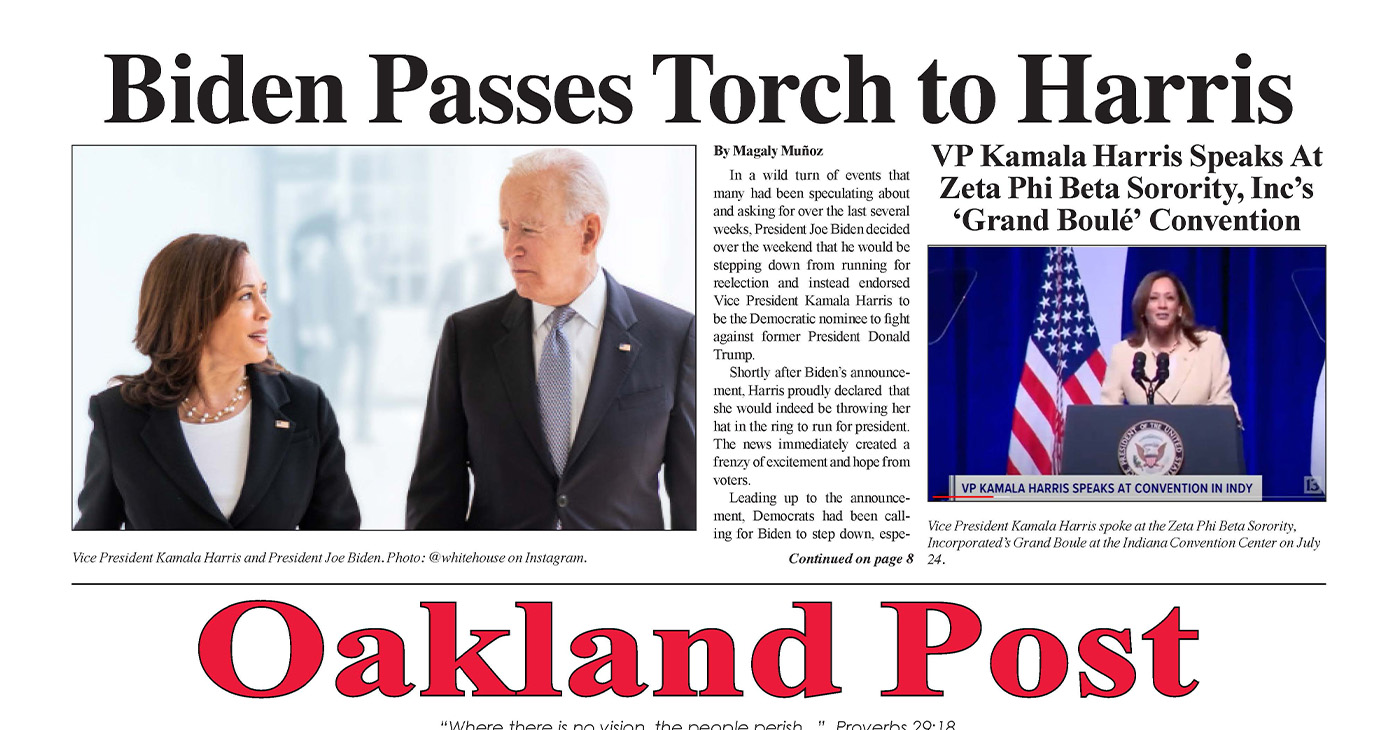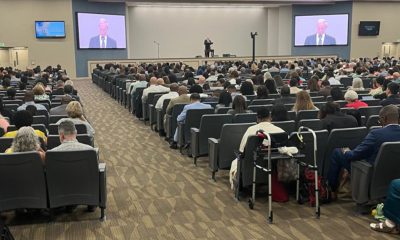Activism
Chicago Community Baby Shower Aims at Lower Rate of Infant Mortality
Relief Society General President Camille N. Johnson ministered to mothers during the Chicago Citywide Community Baby Shower held at the end of 2022. About 400 new and expectant mothers attended this event, held at the Imani Village community center on the city’s South Side.

Special to the Post
Relief Society General President Camille N. Johnson ministered to mothers during the Chicago Citywide Community Baby Shower held at the end of 2022.
About 400 new and expectant mothers attended this event, held at the Imani Village community center on the city’s South Side.
Hustle Mommies and the Urban Mom Collective organized the event in collaboration with the Rev. Dr. Que English, director of the Center for Faith-based and Neighborhood Partnerships of the U.S. Department of Health and Human Services, and The Church of Jesus Christ of Latter-day Saints.
“I felt that sense of sisterhood,” Johnson said. “People were looking out for each other, getting to know one another [and] recognizing that they are in it together, and our desire is to raise successful and happy children.”
Event organizers connected mothers with the local community and government resources, including prenatal care and mental health services. A panel of guest speakers provided information on the importance of self-care during and after childbirth and support services offered by doulas and midwives. At the end, mothers received any of various items they needed — diapers, baby strollers, clothing, baby bottles, car seats and other essentials donated by the Church of Jesus Christ.
“It was a blessing for me. I saw it [advertised on social media], and it was last minute, but it was amazing! I came and I had nothing, but I have so much now. I think it’s great for us expectant mothers to look forward to something,” said LaShawn Thomas, an expectant mother.
“To be able to do that with you guys has been amazing,” expressed Ariel DeNey Rainey, founder of Hustle Mommies and co-founder of the Urban Mom Collective.
“And not only that, it takes a team, it takes a village. The Church [of Jesus Christ] was part of our village. They provided us with volunteers as well as support and help for the moms,” said Ebony Wrenn, co-founder of the Urban Mom Collective.
New mothers had the opportunity to hear from and meet Heidi Murkoff, author of the “What to Expect When You’re Expecting” series of pregnancy guides and creator of the What to Expect Project Foundation.
“I’m just here for the hugs,” said Murkoff of the time she spent greeting new moms and their babies and handing out free copies of her books. “It doesn’t matter where you go in the world. … We are all connected by being moms. We all share an emotional bond.”
“The whole purpose was to bring them together to connect them with needed resources as well as their children, [but] the community shower was just a drop in the bucket,” said the Rev. Dr. English. The event is part of a wider effort by English and the Church of Jesus Christ to address maternal health issues afflicting Black and Native American communities in the United States.
“These opportunities to work with our friends in government and community are so important for us to touch the lives of [individuals],” Johnson said. “We look at things globally, but we must also look at the needs of the one. Today was a sweet opportunity to minister one by one.”
“What is so beautiful about it is that this is not a start-and-stop project. This is not one time. This is an investment into the lives of people,” said the Rev. Dr. English.
Many of the women who attended the event live in underserved communities and represent a demographic in the United States that is plagued by maternal health complications and the loss of newborns.
According to the Centers for Disease Control and Prevention, the infant mortality rate for babies born to African American women (10.6 per 1,000 live births) is more than twice that of infants born to white mothers (4.5 per 1,000 live births) and the U.S. Native American (7.9 per 1,000 live births) and Pacific Islander (8.2 per 1,000 live births) communities face comparable circumstances.
The Church of Jesus Christ is supporting similar efforts in other U.S. cities. In New York City, for example, the Church is providing funding to train doulas for mothers in vulnerable communities.
“It isn’t just about today,” said Sharon Eubank, director of Humanitarian Services for The Church of Jesus Christ of Latter-day Saints, who attended the event with President Johnson. “There is a trained person that will be with every mom — prenatal, at the birth and post-natal — to help her navigate the change in her life.”
These efforts, said Johnson, are especially aligned with the mission of the Church’s Relief Society, which provides opportunities for Latter-day Saint women to expand their influence and to bless their families, wards, stakes, communities, and nations.
“In 1921 [maternal and newborn care] became a focus of the Relief Society. … We’re just doing what we’ve always done, expressing an interest and love for our sisters around the world. Wherever we serve, wherever we are, we can bless and lift. We’re all mothers. Women need each other.”
Activism
Oakland Post: Week of July 24 – 30, 2024
The printed Weekly Edition of the Oakland Post: Week of July 24 – 30, 2024

To enlarge your view of this issue, use the slider, magnifying glass icon or full page icon in the lower right corner of the browser window. ![]()
Activism
Oakland Post: Week of July 17 -23, 2024
The printed Weekly Edition of the Oakland Post: Week of July 17 -23, 2024

To enlarge your view of this issue, use the slider, magnifying glass icon or full page icon in the lower right corner of the browser window. ![]()
Activism
Community Celebrates Historic Oakland Billboard Agreements
We, the Oakland Billboard Economic Development Coalition, which includes Oakland’s six leading community health clinics, all ethnic chambers of commerce, and top community-based economic development organizations – celebrate the historic billboard agreements approved last year by the Oakland City Council. We have fought for this opportunity against the billboard monopoly, against Clear Channel, for five years. The agreements approved by Council set the bar for community benefits – nearly $70 Million over their lifetime, more than 23 times the total paid by all previous Clear Channel relocation agreements in Oakland combined.

Grand Jury Report Incorrect – Council & Community Benefit
We, the Oakland Billboard Economic Development Coalition, which includes Oakland’s six leading community health clinics, all ethnic chambers of commerce, and top community-based economic development organizations – celebrate the historic billboard agreements approved last year by the Oakland City Council. We have fought for this opportunity against the billboard monopoly, against Clear Channel, for five years. The agreements approved by Council set the bar for community benefits – nearly $70 Million over their lifetime, more than 23 times the total paid by all previous Clear Channel relocation agreements in Oakland combined.
Unfortunately, a recent flawed Grand Jury report got it wrong, so we feel compelled to correct the record:
- Regarding the claim that the decision was made hastily, the report itself belies that claim. The process was five years in the making, with two and a half years from the first City Council hearing to the final vote. Along the way, as the report describes, there were multiple Planning Commission hearings, public stakeholder outreach meetings, a Council Committee meeting, and then a vote by the full Council. Not only was this not hasty, it had far more scrutiny than any of the previous relocation agreements approved by the City with Clear Channel, all of which provide 1/23 of the benefits of the Becker/OFI agreements approved by the Council.
- More importantly, the agreements will actually bring millions to the City and community, nearly $70M to be exact, 23 times the previous Clear Channel relocation agreements combined. They certainly will not cost the city money, especially since nothing would have been on the table at all if our Coalition had not been fighting for it. Right before the decisive City Council Committee hearing, in the final weeks before the full Council vote, there was a hastily submitted last-minute “proposal” by Clear Channel that was debunked as based on non-legal and non-economically viable sites, and relying entirely on the endorsement of a consultant that boasts Clear Channel as their biggest client and whose decisions map to Clear Channel’s monopolistic interests all over the country. Some City staff believed these unrealistic numbers based on false premises, and, since they only interviewed City staff, the Grand Jury report reiterated this misinformation, but it was just part of Clear Channel’s tried and true monopolistic practices of seeking to derail agreements that actually set the new standard for billboard community benefits. Furthermore, our proposals are not mutually exclusive – if Clear Channel’s proposal was real, why had they not brought it forward previously? Why have they not brought it forward since? Because it was not a real proposal – it was nothing but smoke and mirrors, as the Clear Channel’s former Vice President stated publicly at Council.
Speaking on behalf of the community health clinics that are the primary beneficiaries of the billboard funding, La Clinica de la Raza CEO Jane Garcia, states: “In this case, the City Council did the right thing – listening to the community that fought for five years to create this opportunity that is offering the City and community more than twenty times what previous billboard relocation agreements have offered.”
Oakland Billboard Economic Development Coalition
| Native American Health Center | La Clínica de la Raza | West Oakland Health Center |
| Asian Health Services | Oakland LGBTQ Center | Roots Community Health Center |
| The Unity Council | Black Cultural Zone | Visit Oakland |
| Oakland African American Chamber of Commerce | Oakland Chinatown Chamber of Commerce | Oakland Vietnamese Chamber of Commerce |
| Oakland Latino Chamber of Commerce | Building Trades of Alameda County | (partial list) |
-

 Arts and Culture3 weeks ago
Arts and Culture3 weeks agoRooted in Tradition: The Intricate History of Black Hair Braiding
-

 Bay Area4 weeks ago
Bay Area4 weeks ago“I Will Not Be Bullied,” Says Oakland Mayor Sheng Thao
-

 Bay Area2 weeks ago
Bay Area2 weeks agoPG&E Increases Rates While Bay Area Households Are Struggling to Stay Afloat
-

 Business3 weeks ago
Business3 weeks agoGov Newsom: Raising Fast Food Minimum Wage to $20 Pays Off as Jobs Multiply in Industry
-

 Activism4 weeks ago
Activism4 weeks agoOpponents of Mayor Sheng Thao Are Calling on Her to Resign Following FBI Raid
-

 Community1 week ago
Community1 week agoHundreds Come to Jehovah’s Witnesses’ Assembly Hall for Three-Day Program of ‘Good News’ in Fremont
-

 Bay Area2 weeks ago
Bay Area2 weeks agoJuneteenth Mass Shooting Suspect Charge with Multiple Counts of Felony Assault by Alameda County DA Pamela Price
-

 Activism4 weeks ago
Activism4 weeks agoOakland Coliseum Sale to AASEG: A Model for Community Development and Inclusion

















































